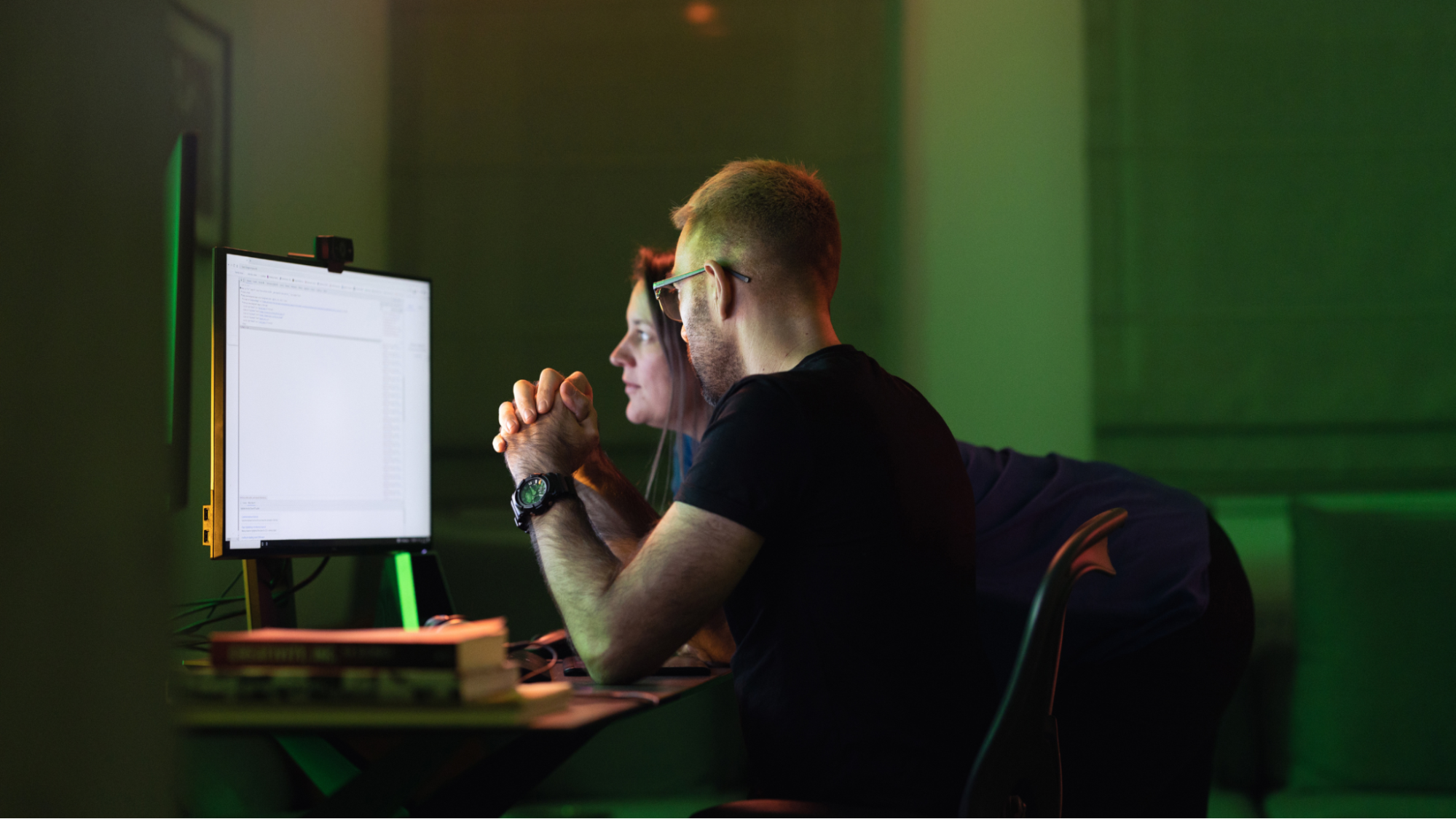Because accessibility for all can't wait any longer, Mr Suricate invites you to take the plunge in an exclusive webinar in partnership with Facil'iti! Digital inclusion should no longer take a back seat.
Being disabled means having requirements for a pleasant user experience. Dyslexia, visual fatigue, color blindness, cataracts or visual impairment, the needs are diverse and varied. So, when it comes to motor, psychological or visual disabilities, it's up to e-tailers to adapt their offer - but how?
Find the answers to the following questions:
- What is digital accessibility? How can it be implemented?
- What are the challenges for 2025?
- How to improve your user experience throughaccessibility?
- What are the technical challenges involved in implementing these tests on an e-commerce site?
Did you miss it? Don't worry, you can find all the highlights of our latest webinar in this article!
Today, we're back with Mr Suricate in partnership with Facil'Iti, in the presence of Monika Pancer and Thomas Horblin.
Interested in our joint offer? See you at the end of this article.
How can we make our websites more inclusive?
Accessibility in a nutshell :
In 2025, Internet traffic is set to increase. In fact, according to a study by Netscout, there will be a 30% increase in web traffic in France during, and since, confinement. A trend largely encouraged by the dematerialization of our society, whether we're talking about e-commerce or public services. The days when taxes, identity cards and vital statistics were all done on paper, while not a thing of the past, are still far removed from our daily lives. More than just a trend, even our senior citizens are now surfing the web! According to a study conducted by Avira in four European countries, including France, 73% of the over-55s made greater use of their computers during the first lockdown.
There are many conditions that can make it difficult to navigate the Internet. According to the HID (Handicaps, Incapacités, Dépendance) survey, there are 207,000 blind or partially sighted people in France, and 932,000 partially sighted people. Similarly, according to the French Dys Federation(FFDYS), there are 6 to 8% dys disorders in France, although no reliable study has given a figure for DYS disorders in France. Epileptic disorders are not to be left out either, according to Santé Publique France, on January 1, 2020, 685,122 people with treated epilepsy were identified in France, 41% of whom had been hospitalized and 29% of whom had long-term condition status. The same applies to Parkinson's disease: according to the French Ministry of Health, there are 272,500 sufferers in France, with 25,000 new cases each year. Contrary to popular belief, Parkinson's is not a disease of the elderly: almost one in two sufferers is diagnosed at an average age of 58, i.e. still of working age. 17% of sufferers are under 50. And of course, this does not include senior citizens and people with temporary problems. Just imagine having to surf the Internet with a broken wrist or an ophthalmic migraine!
So today, it's important to ask ourselves: how can we make digital technology more accessible to human beings with a certain number of frailties? These users are not just a new niche to be reached, but a real part of the population that needs to have their needs taken into account. Going a step further, on the DRES (Direction de la recherche, des études, de l'évaluation et des statistiques) website, by 2022, in mainland France, 14.5 million people aged 15 or over will have reported having severe functional limitations, such as difficulty performing certain physical tasks, memory problems, etc.
In France, however, digital accessibility is not totally absent from the legislative front. Indeed, the implementation of article 47 of the February 11, 2005 law on equal opportunities stipulates that all government online services must be accessible to all.
An accessible website is one that enables people with disabilities to access its content and functions without difficulty. For example, an accessible site enables :
- navigate with a voice synthesizer and/or Braille display (used in particular by the blind and partially sighted);
- customize the site display according to your needs (font magnification, color modification, etc.);
- navigate without using the mouse (with the keyboard only, via a touch screen, by voice or any other adapted device).
To achieve this, the site must comply with the standards in force at the time of its creation and updates, in accordance with the requirements of the RGAA (référentiel général d'amélioration de l'accessibilité). This obligation, first dedicated to public services in 2005, has been extended to large private companies (> 250 M€) in 2019.
Since June 28, 2025, standardized digital accessibility rules have been in force for SMEs with sales in excess of 2 million euros, and for companies employing more than 10 people.
Since June 2025, it has been :
- E-commerce sites required to publish accessibility levels on several key pages.
- Mandatory online notification of any non-compliance.
- Implementation of a continuous improvement approach (audits, action plans, follow-up).

Mr Suricate and accessibility
Accessibility isn't just a legal issue. It's also a real business opportunity. And that's exactly Mr Suricate's position. Thanks to its expertise in the automation of functional tests, Mr Suricate offers a complete solution that complements human audits, enabling long-term compliance with accessibility standards.
What tests are needed to guarantee RGAA/WCAG compliance?
Mr Suricate now includes automated tests to detect a wide range of non-compliances: color contrasts, missing ARIA tags, keyboard navigation problems, non-compliant HTML structure, and so on. These tests, based on the WCAG reference framework and adapted to French specificities (RGAA), can be used to check the conformity of web paths on a large scale, continuously and without massive mobilization of human resources.
What are the technical challenges?
Automating accessibility tests means taking into account the multiplicity of user configurations. For example, keyboard focus management or compatibility with screen readers are difficult to validate without specific tools. Mr Suricate 's approach relies on a dedicated library (axis-core) to guarantee a high level of detection, while offering clear, actionable reporting.
In concrete terms, what are the benefits?
With continuous automation, companies can :
- monitor compliance over time,
- anticipate regressions during site updates,
- maintain a high level of accessibility between two complete audits.
This partnership between Facil'iti and Mr Suricate offers complete coverage: an initial manual audit, followed by automated monitoring over time. A reliable, scalable and high-performance offering.
Improving user experience through accessibility :
Accessibility also (and above all!) means a rethought user experience. Monika Pancer, from Facil'iti, presented their innovative solution and the concrete benefits for users and companies alike.
A usage-based approach
Facil'iti doesn't just meet a regulatory requirement: the solution was designed in co-development with patient associations (APF France Handicap, France Parkinson, etc.) to meet real needs. Their interface allows users to adapt the site's display to their own profile: visual, motor, cognitive or even passenger impairments.
An invisible but powerful technical solution
Integration is simple and tailor-made: a line of code and a logo visible on the site activate the adaptation interface. Accessible without registration and free of charge for visitors, it offers 24 ready-to-use filters and an infinite number of customizable combinations.
A broad, measurable impact
With over 1,500 sites equipped and 6 million users worldwide, Facil'iti shows that inclusivity is possible for everyone. It really does improve navigation, and therefore conversion rates. By making the experience more fluid for everyone, brands can reach an audience that is often left out, and enhance their CSR commitment.
A complementary offering, a common goal: sustainable accessibility
The Mr Suricate x Facil'iti partnership is the ideal combination of technical expertise and UX customization:
- An initial audit to assess a site's compliance with RGAA/WCAG.
- Intelligent automation to maintain this level of accessibility over time.
- An adaptive user interface to enhance the experience in real time, whatever the user's condition.
Want to find out more?
Contact our teams to find out more about our joint offer and get started on the road to sustainable digital accessibility.

.png)

